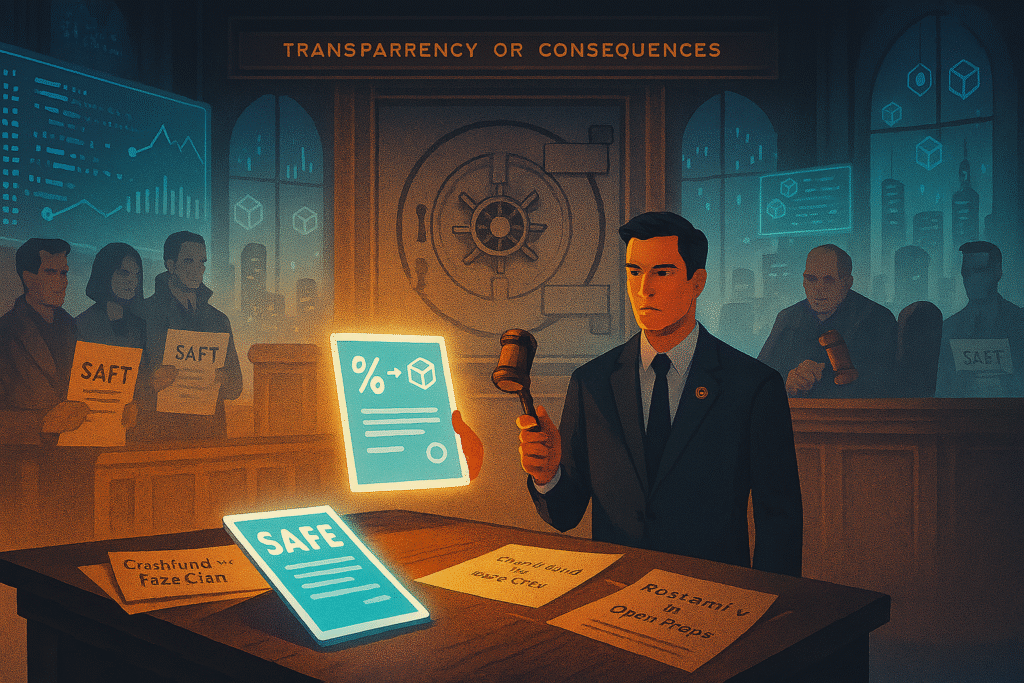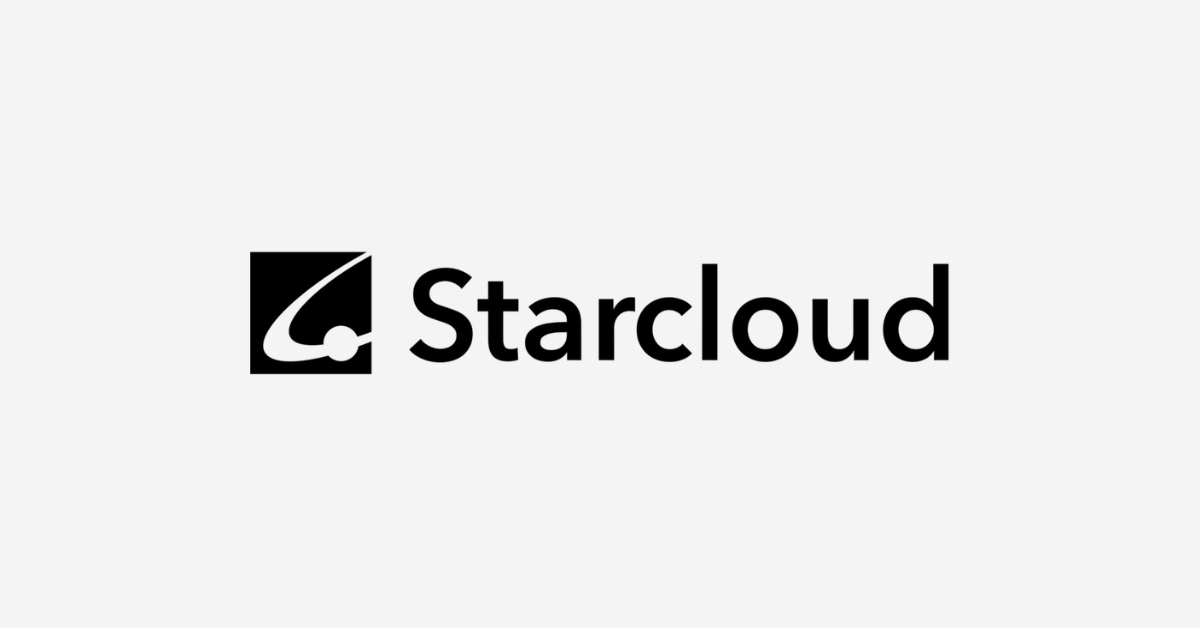- Home
- /
- Venture Capital
- /
- SAFE vs SAFT vs SAFE+T:…
Introduction: The Rise of Hybrid Fundraising in Web3
In the fast-evolving world of crypto and Web3 startups, traditional fundraising models are being reimagined. Two legal instruments have emerged as frontrunners in this transformation: the SAFE (Simple Agreement for Future Equity) and the SAFT (Simple Agreement for Future Tokens). Originally designed to simplify early-stage investment, these contracts now play a pivotal role in how blockchain ventures raise capital, distribute tokens, and navigate regulatory minefields.
Whether you’re a founder preparing for your first raise or an investor evaluating your exposure to future equity or tokens, understanding the mechanics, risks, and strategic use of SAFEs and SAFTs is essential. This guide breaks down both instruments, compares their strengths, and explores how they’re being adapted for the unique demands of Web3.
What Is a SAFE?

A SAFE is a legal agreement that gives investors the right to obtain equity in a startup at a future date, typically triggered by a priced funding round or liquidity event. Created by Y Combinator in 2013, SAFEs were designed to be faster and simpler than convertible notes, eliminating interest rates and maturity dates.
Key Features of SAFEs
- No immediate equity: Investors don’t receive shares upfront.
- Conversion triggers: Equity is issued during a future financing round or acquisition.
- Valuation caps and discounts: Early investors often get favorable terms.
- No debt: Unlike convertible notes, SAFEs don’t accrue interest or require repayment.
- Flexibility: Founders can negotiate terms like pro-rata rights or information access.
SAFEs are especially popular in early-stage fundraising when a startup’s valuation is uncertain and tokenomics are not yet defined.
What Is a SAFT?

A SAFT is a contract that allows investors to purchase rights to future tokens, typically delivered after a project’s network or platform goes live. SAFTs emerged as a crypto-native adaptation of the SAFE, aiming to sidestep regulatory issues by delaying token issuance until the tokens can be classified as utility rather than securities.
Key Features of SAFTs
- Token-based fundraising: Investors receive tokens, not equity.
- Used in private rounds: Typically limited to accredited investors.
- Conversion event: Tokens are delivered after a Token Generation Event (TGE).
- Regulatory complexity: SAFTs often require legal reviews to ensure compliance.
- Vesting and lockups: Tokens may be subject to cliffs and vesting schedules.
SAFTs are best suited for projects with a clear token roadmap, defined tokenomics, and a registered Token SPV (Special Purpose Vehicle).
SAFT vs SAFE vs SAFE+T: Spotting the Differences

At first glance, these might seem interchangeable, but peel back the layers, and contrasts emerge. SAFEs are equity purists, ideal for pre-token projects with vague roadmaps. SAFTs are token maximalists, demanding a nailed-down whitepaper and SPV (Special Purpose Vehicle) for issuance. SAFE+Ts? They’re the Swiss Army knives, blending both for hybrid plays.
| Feature | SAFE | SAFT | SAFE+T |
|---|---|---|---|
| Core Promise | Future equity | Future tokens only | Equity + optional tokens |
| Trigger Event | Funding round or acquisition | Network launch/TGE | SAFE events + token issuance |
| Complexity | Low-standard templates | Medium-regulatory scrutiny | Higher-custom side letters |
| Best For | Early dev labs, no tokens yet | Token-first protocols | Pivotal projects with options |
| Investor Pool | Broad accredited | Strict KYC accredited | Accredited with flexibility |
The big splitter? Regulation. SAFEs skirt token woes early on; SAFTs invite SEC eyes if tokens smell like securities.
SAFE+Token Warrant: A Hybrid Approach

As Web3 projects increasingly blend equity and token models, a hybrid fundraising instrument has emerged: the SAFE+Token Warrant (or SAFE+T). This structure allows investors to receive both equity and tokens, often through a side letter or warrant agreement.
Benefits of SAFE+T
- Dual exposure: Investors gain rights to both equity and tokens.
- Flexibility: Founders can delay token issuance without breaching contract terms.
- Negotiable terms: Token allocation can be based on equity ownership or fixed conversion rates.
SAFE+T is gaining traction among founders who want to preserve optionality while aligning investor incentives.
Legal and Regulatory Considerations

Navigating the legal landscape is critical when choosing between SAFE and SAFT. In jurisdictions like the US and UK, regulators scrutinise token sales for potential securities violations. SAFTs, in particular, must be carefully structured to avoid triggering registration requirements with agencies like the SEC or FCA.
Key Legal Tips
- Use a Token SPV in crypto-friendly jurisdictions for SAFTs.
- Avoid promoting SAFTs to retail investors unless using regulated platforms.
- Include clear disclaimers and risk disclosures in fundraising materials.
- Consult legal counsel to structure vesting, lockups, and conversion terms.
Courtroom Lessons: What Happens When Things Go Wrong

Legal cases show what can go wrong with SAFEs and SAFTs if trust breaks down. Here’s what you need to know in simple terms:
- Crashfund v. FaZe Clan (2020)
- Investors signed a SAFE but got no equity because the company used a tricky merger to avoid it.
- The court said founders must act fairly and not dodge promises.
- Lesson: Be honest and clear with investors, or you could face legal trouble.
- Rostami v. Open Props (2023)
- A SAFT investor sued, claiming fraud when tokens became worthless.
- The court dismissed the case, saying hype isn’t lying, and investors must research risks themselves.
- Lesson: Investors, do your homework; founders, disclose risks clearly.
- Seed River v. AON3D (2023)
- A SAFE required regular updates, but the company stayed silent.
- The court ruled this broke the contract, though it didn’t stop the project.
- Lesson: Founders, keep investors updated to avoid legal issues.
Key Takeaways
- Always act in good faith, honesty is non-negotiable.
- Founders: Document every step and follow through on promises.
- Investors: Read all terms carefully and understand the risks.
When Should You Use Each Instrument?

Use a SAFE when
- Your project is in early development.
- You haven’t finalized tokenomics.
- You want to raise quickly with minimal legal overhead.
Use a SAFT when
- Your token model is defined and legally reviewed.
- You have a clear timeline for token launch.
- You’re targeting institutional or accredited investors.
Use SAFE+T when
- You want to offer both equity and token exposure.
- You need flexibility around token launch timing.
- You’re unsure whether your product will require a token.
Recommended Readings

If you’re serious about startup fundraising and crypto law, these books offer deeper insights:
- “Cryptoassets: The Innovative Investor’s Guide to Bitcoin and Beyond“ by Chris Burniske and Jack Tatar: Breaks down token economics like a pro.
- “The Lean Startup“ by Eric Ries: Timeless on validating ideas before big raises—SAFE gold.
- “Venture Deals“ by Brad Feld and Jason Mendelson: Insider take on term sheets, perfect for SAFE nuances.
- “Token Economy: How Blockchains and Smart Contracts Revolutionize the Economy“ by Shermin Voshmgir: Maps SAFTs in the broader Web3 puzzle.
These picks will sharpen your edge without the fluff. Happy fundraising.
FAQs

Q1: Can I use both SAFE and SAFT in the same project?
A: Yes. Many founders use SAFE for early equity rounds and SAFT for later token-based fundraising. SAFE+T offers a combined approach.
Q2: Are SAFTs legal in the US?
A: SAFTs are not illegal, but they must be carefully structured to comply with securities laws. Most are offered only to accredited investors.
Q3: Do SAFEs convert automatically?
A: Conversion depends on trigger events like a priced round or acquisition. Terms vary by agreement.
Q4: Can retail investors participate in SAFTs?
A: Generally no. SAFTs are designed for private rounds and accredited investors. Public token sales require different instruments.
Q5: What happens if the token never launches?
A: SAFT investors may lose their investment. Unlike equity, SAFTs don’t grant ownership rights in the company.
Q6: Are there alternatives to SAFEs and SAFTs?
A: Absolutely. Traditional priced equity rounds are still common. For tokens, other models include public token sales (IDOs/ICOs), airdrops, and launching with a liquidity bootstrapping pool (LBP). Some newer, more complex hybrids like the “SAFET” (which can convert to either tokens or equity) also exist.
Conclusion: Fundraising in the Age of Tokens

SAFE and SAFT contracts have become foundational tools for Web3 fundraising. Each offers distinct advantages depending on your project’s stage, token strategy, and investor profile. As regulations tighten and investor expectations evolve, founders must choose wisely, and often creatively.
Whether you’re building a decentralized protocol or a tokenized SaaS platform, understanding these instruments is more than legal housekeeping. It’s about shaping the future of your venture, aligning incentives, and building trust from day one.
If you’re preparing a raise, start by asking: Are you selling equity, tokens, or both? The answer will guide everything that follows.












Leave a Reply